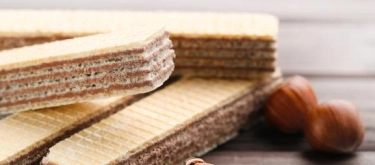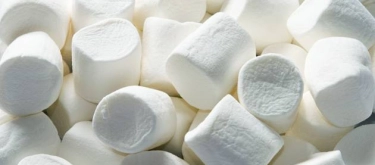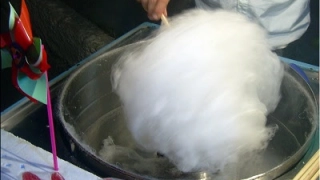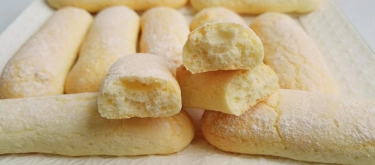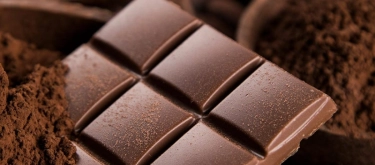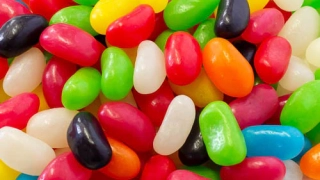Caramel: Taste Profile, Aroma, Benefits and Health Risks
Caramel is a beloved confection that captures the essence of indulgence with its rich, buttery sweetness and luxurious, smooth texture. Whether drizzled over desserts, enjoyed as a chewy candy, or transformed into a decadent sauce, caramel has a unique ability to elevate a wide array of dishes. This article provides a comprehensive sensory description of caramel—including its taste, aroma, texture, and appearance—followed by an in-depth flavor analysis, various culinary applications, guidelines for selection and storage, nutritional insights, and key dietary considerations.
Caramel is a sweet confection primarily made by heating sugar, often combined with butter, cream, or milk. Traditional recipes are dairy-based and not suitable for vegans, though vegan alternatives exist using plant-based ingredients. Caramel is naturally gluten-free but high in sugar and calories, so it should be enjoyed in moderation as part of a balanced diet.
What does Caramel taste like?
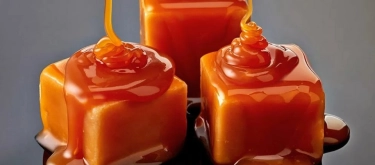
Complete Sensory Description
Taste:
Caramel delivers a lush, complex sweetness that evolves as it melts on the tongue. Initially, it bursts with a deep, toasted sugar flavor, which is enriched by buttery and creamy undertones. A slight hint of bitterness emerges toward the finish, balancing the overall sweetness and creating a layered taste experience.
Aroma:
The scent of caramel is warm and inviting, marked by rich notes of toasted sugar and butter, with subtle nuances of vanilla and a whisper of burnt sugar. This enticing fragrance immediately evokes comfort and indulgence.
Texture:
Caramel’s texture can range from smooth and silky (as in sauces) to chewy and tender (as in candies). When used as a sauce, it coats the palate with a velvety, luscious consistency; in candy form, it offers a satisfying, chewy bite that slowly softens as you savor it.
Appearance:
Caramel typically boasts a golden to deep amber hue, with a glossy, almost liquid shine in sauce form or a matte, slightly rustic finish in candy form. Its warm color and smooth appearance make it visually appealing and a delightful addition to any dessert.
In-Depth Flavor Analysis
- Toasted Sweetness:
The primary flavor of caramel is its rich, toasted sugar base, which provides a deep, inviting sweetness. - Buttery Creaminess:
Infusions of butter and cream contribute a luxurious, creamy quality that softens the intensity of the sugar. - Subtle Bitterness:
A faint, pleasant bitterness emerges from the caramelization process, adding complexity and preventing an overly cloying sweetness. - Flavor Evolution:
With each bite, the taste transitions from a burst of intense sweetness to a mellow, balanced finish that lingers with a hint of warmth.
Culinary Applications
- Dessert Toppings:
Drizzle caramel sauce over ice cream, pancakes, or waffles to add a decadent layer of flavor. - Confectionery Treats:
Enjoy caramel candies or chews as a standalone treat, or incorporate them into baked goods for added texture and sweetness. - Sauces and Glazes:
Use caramel as a base for savory glazes on meats or vegetables, where its sweet complexity can contrast beautifully with salty or spicy elements. - Beverage Enhancer:
Stir caramel into coffee, hot chocolate, or cocktails for a rich, indulgent twist. - Pastry Fillings:
Incorporate caramel into tarts, cakes, or pastry fillings to create a luxurious, melt-in-your-mouth experience.
Selection and Storage
Selecting Caramel:
- Look for caramel products with a uniform, rich amber color and a smooth consistency.
- High-quality caramel should have a balanced flavor profile without any burnt or overly bitter notes.
Storage Recommendations:
- Store caramel sauce in an airtight container in the refrigerator, and allow it to come to room temperature before use for optimal pourability.
- Chewy caramel candies should be kept in a cool, dry place away from direct sunlight to prevent sticking and preserve texture.
- Consume within the recommended period on the packaging to enjoy maximum flavor and quality.

Quick Facts
- Indulgent Confection:
Caramel is celebrated for its luxurious blend of toasted sugar, butter, and cream. - Versatile Ingredient:
It enhances a wide variety of dishes, from simple desserts to sophisticated sauces. - Nutrient Consideration:
While rich in flavor, caramel is high in sugar and calories and should be enjoyed in moderation. - Visual Appeal:
Its warm golden to amber hues add a striking, appetizing look to both sweet and savory dishes. - Adaptable for Diets:
Vegan caramel alternatives are available, making it accessible for different dietary preferences.
Health Benefits of Caramel
- Quick Energy Source:
The high sugar content provides a rapid burst of energy, ideal for an occasional indulgence. - Comfort and Enjoyment:
Enjoying caramel can provide emotional comfort and a sense of indulgence, enhancing mood. - Culinary Versatility:
Its ability to transform the flavor profile of dishes can encourage creativity in the kitchen. - Antioxidant Potential (in Some Varieties):
Certain artisanal caramels may retain trace amounts of antioxidants from natural ingredients. - Mindful Treat:
When consumed in moderation, caramel can be a satisfying addition to a balanced diet without displacing more nutrient-dense foods.
Additional Nutritional Insights
- Energy-Dense:
Caramel is high in simple sugars, offering a quick energy boost but minimal protein or fiber. - Micronutrient Consideration:
Traditional caramel offers little in the way of vitamins and minerals, so it should be balanced with nutrient-rich foods. - Glycemic Impact:
Due to its high sugar content, caramel has a high glycemic index and should be consumed sparingly by those monitoring blood sugar levels. - Fat Content Variability:
Depending on the recipe, caramel may contain varying amounts of butter or cream, affecting its overall fat and calorie profile. - Artisanal vs. Commercial:
Artisanal caramels may be crafted with fewer additives and higher-quality ingredients compared to mass-produced versions, offering a more authentic flavor and texture.
How to Enjoy Caramel
- As a Sauce:
Drizzle warm caramel sauce over ice cream, fruit, or pancakes to create an indulgent dessert. - In Baking:
Incorporate caramel into brownies, cakes, or cookies for a decadent burst of flavor and a delightful chewy texture. - Confectionery Treats:
Savor caramel candies or chews as an occasional treat that melts slowly in your mouth, delivering layers of sweet complexity. - Beverage Enhancer:
Stir a spoonful of caramel into your coffee or hot chocolate for a sweet, velvety twist. - Creative Culinary Uses:
Experiment by using caramel as a filling for pastries or as a glaze for roasted meats to add a unique balance of sweetness and savory depth.
Harm and Dietary Considerations
- High Sugar Content:
Caramel is very high in sugar, and overconsumption can contribute to weight gain and dental issues. Enjoy in moderation. - Caloric Density:
Due to its concentrated energy content, caramel should be consumed as an occasional treat rather than a regular part of your diet. - Not a Nutrient Source:
Caramel provides minimal nutritional benefits beyond its taste and energy content. - Potential for Added Ingredients:
Some commercial caramels may include preservatives or artificial flavors, so choose products with simple, natural ingredients whenever possible. - Vegan Considerations:
Traditional caramel recipes use dairy products, so opt for vegan versions if you follow a plant-based diet.
Conclusion
Caramel is a captivating confection that transforms simple sugar into a luxurious, multi-dimensional treat. Its complex interplay of toasted sweetness, buttery creaminess, and subtle bitterness creates an indulgent flavor profile that delights the senses. While it offers a burst of energy and a moment of pure indulgence, caramel’s high sugar content necessitates mindful enjoyment. Whether drizzled over desserts, enjoyed as a chewy candy, or used as a creative ingredient in savory dishes, caramel remains a timeless favorite that continues to inspire culinary creativity.
References
- McGee, H. (2004). On Food and Cooking: The Science and Lore of the Kitchen. New York: Scribner.
- European Confectionery Journal. (2017). "The Art and Science of Caramel Making."
- USDA. (2019). "Nutrient Data for Sweet Confections."
